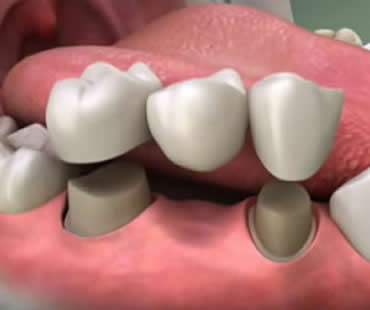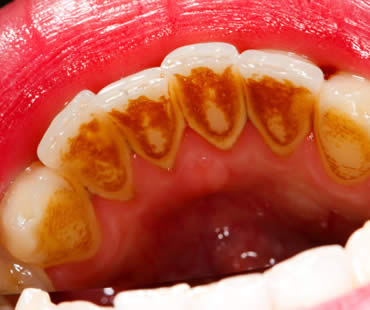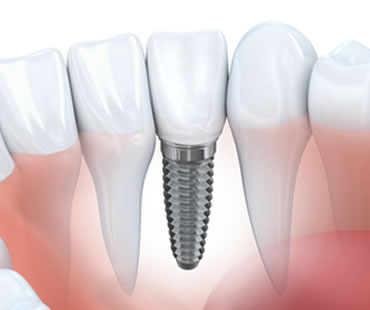
by Dr. Adkins | Sep 28, 2017 | Blog, Dental Topics, Uncategorized
A good cosmetic dentist can make a difference in your life. If you are unhappy with your smile, turning to this branch of dentistry that focuses on improving your look through things like shaping, whitening, and restoring can help. Cosmetic dental procedures address all sorts of oral issues and allow you to achieve dramatic improvements to your smile. A key part of a good outcome is finding the right cosmetic dentist.
To help in your search for a dental professional skilled in cosmetic treatments and procedures, follow these guidelines:
- Do your research – before visiting cosmetic dentists, do some research on your own about procedures that might address the issues you have with your smile. You’ll be more prepared to ask questions and learn about specific procedures.
- Ask about experience – make sure the dentist has experience in a variety of procedures, especially the ones you’re interested in having performed.
- Look for accreditations – in addition to making sure the dentist received the proper education, membership in major national organizations indicates the dentist has the correct training in cosmetic dental treatments.
- Check their previous work – ask to see before and after photos of dental work that the dentist performed on actual patients.
- Focus on technology – modern technology such as digital X-rays and dental lasers should be available in the office. The ability to see previews of how a procedure will look in your smile is also an attractive benefit of a cosmetic dental practice. Be sure to inquire about sedation methods if you feel you might need them.
- Consider comfort – the dentist you choose should make you feel at ease about all aspects of treatment. Willingness to answer all of your questions and make sure you are confident with the staff and the office itself is vital when choosing a dentist.
Following these tips in selecting your cosmetic dentist will go a long way in helping you decide on a professional, experienced, qualified caregiver who can transform your smile.
Schedule your appointment at our McDonough dental office

by Dr. Adkins | Jul 7, 2017 | Blog, Dental Topics, Uncategorized
If you’re looking to improve both your oral health and your smile, a dental crown or a bridge may be recommended. They both improve the functionality and appearance of teeth, providing many health and cosmetic benefits to patients.
What are crowns?
These are basically caps that are placed over existing teeth. They restore the size, shape and strength of your tooth and make it look natural and appealing in your smile. Crowns can be made of various materials including ceramic, resin, plastic, stainless steel or metal alloys. A combination of materials may even be used to achieve ideal strength and appearance.
When are crowns recommended?
There are a number of reasons that dentists install crowns. They may protect a weak tooth, save a cracked tooth, restore a worn or broken tooth, hide a badly discolored or crooked tooth, hold a bridge, cover an implant, or aid in completing a cosmetic dental procedure.
What does the crown procedure involve?
A crown installation typically requires three dental visits. Initially, the dentist examines the tooth to advise the best material. On the second visit, the tooth is prepared and an impression is made for creating the crown in a dental lab, and a temporary crown is placed. The final visit involves replacing the temporary crown with the final one.
What are bridges?
These restorations consist of two crowns that are joined together by a tooth. Bridges replace missing teeth by relying on adjacent teeth for support. They are made out of the same types of materials as crowns.
When are bridges recommended?
Bridges are most often a solution for replacing a few teeth, especially on just one side of the mouth. They are only successful when neighboring teeth are strong and offer excellent bone support.
What is the bridge procedure?
While two crowns and a missing tooth are fabricated in a dental lab, teeth adjacent to the gap are trimmed and prepared for crowns. When the restoration is ready, the pieces will be joined in the mouth to create a bridge to be held in place by the crowns on both sides of the artificial tooth.
We treat patients from McDonough and the surrounding area

by Dr. Adkins | Jun 7, 2017 | Blog, Dental Topics, Uncategorized
In recent years, dentists and oral health professionals have thought that 3 out of 4 American adults, or roughly 75 percent, have some level of gum disease. A new survey indicates that those estimates are low. According to the National Health and Nutrition Examination Survey conducted by the Centers for Disease Control and Prevention in Atlanta and the American Academy of Periodontology, the actual numbers may be 50 percent higher. If correct, these numbers suggest gum disease is a much larger problem in this country.
Also referred to as periodontal disease, gum disease is mainly caused by plaque, the sticky substance that forms on your teeth. Plaque can harden into tartar, which irritates the gums and causes pockets of infection to form between your gums and teeth. Other factors like genetics, stress, lifestyle choices, and certain medications can also increase your chances of developing gum disease. Because the symptoms start out mild, usually red or bleeding gums, many people don’t realize they have this condition. Without treatment, periodontal disease can lead to gum recession and tooth loss.
In the past few years, gum disease has also been linked to other health problems. Research has found a connection between periodontal disease and chronic conditions such as rheumatoid arthritis, osteoporosis, heart disease, and Alzheimer’s. Pregnant women with untreated gum disease have a greater risk of pre-term labor and low-birth weight babies.
To decrease your risk of gum disease and protect your smile, follow these tips:
- Clean teeth at least twice a day with a soft-bristle toothbrush
- Floss regularly
- Schedule routine checkups with your dentist
- Contact your doctor right away if you have swollen or bleeding gums
Schedule your appointment at our McDonough dental office

by Dr. Adkins | May 18, 2017 | Blog, Dental Topics, Uncategorized
Dental implants have become the standard of care recommended by dentists for replacing missing or damaged teeth. Compared to other solutions, many patients are finding that dental implants give them a reason to smile.
Realism
Dental implants provide a new tooth and root that looks, fits, functions, and feel like a natural tooth. Implants avoid the potential problems associated with some alternatives, such as trouble eating, speaking or laughing.
Durability
Dental implants can last a lifetime with proper care, making them outlast most of their counterparts which have a lifespan of up to 10 years.
Natural
Patients are able to retain their natural face shape. Missing teeth can make a person’s face look sunken and saggy, but implants allow you to maintain your proper face shape and smile.
Protective
Missing teeth may cause jaw bone deterioration or loss, but implants preserve and stimulate the natural bone. The jaw is able to maintain its strength and firmness, protecting your bone structure. Also, neighboring teeth are not affected by dental implants. Healthy adjacent teeth are not damaged and stay exactly where they should be.
Health
Cavities can’t take hold in a dental implant and crown. Proper hygiene and regular checkups should continue to ensure your mouth is healthy, but that particular tooth will not decay.
Confidence
Dental implants erase the patient’s embarrassment about their smile and give them the confidence to enjoy life again. No more worries about a big space in the smile, and no concerns that the restoration will loosen or fall out like may happen with dentures.
Convenience
There are no hassles for the patient to alter their diet because implants allow natural biting and chewing. Favorite foods can still be enjoyed with this restoration.
Simplicity
No need to remove the implants overnight for cleaning because they are permanently installed. They are a permanent solution inside the jaw and mouth.
If you live in the McDonough area, contact us today






 770-957-5214
770-957-5214  E-Mail Us
E-Mail Us 
